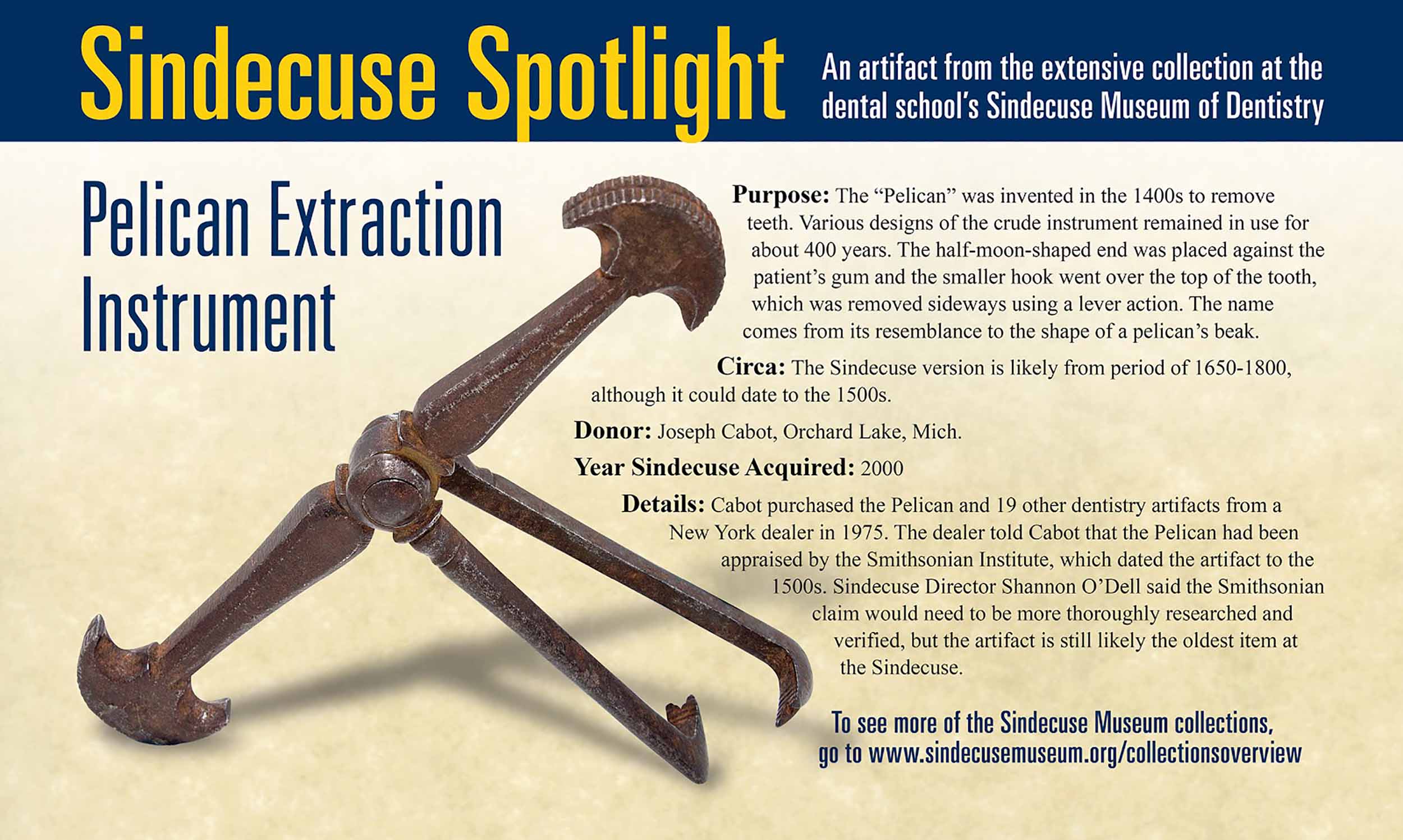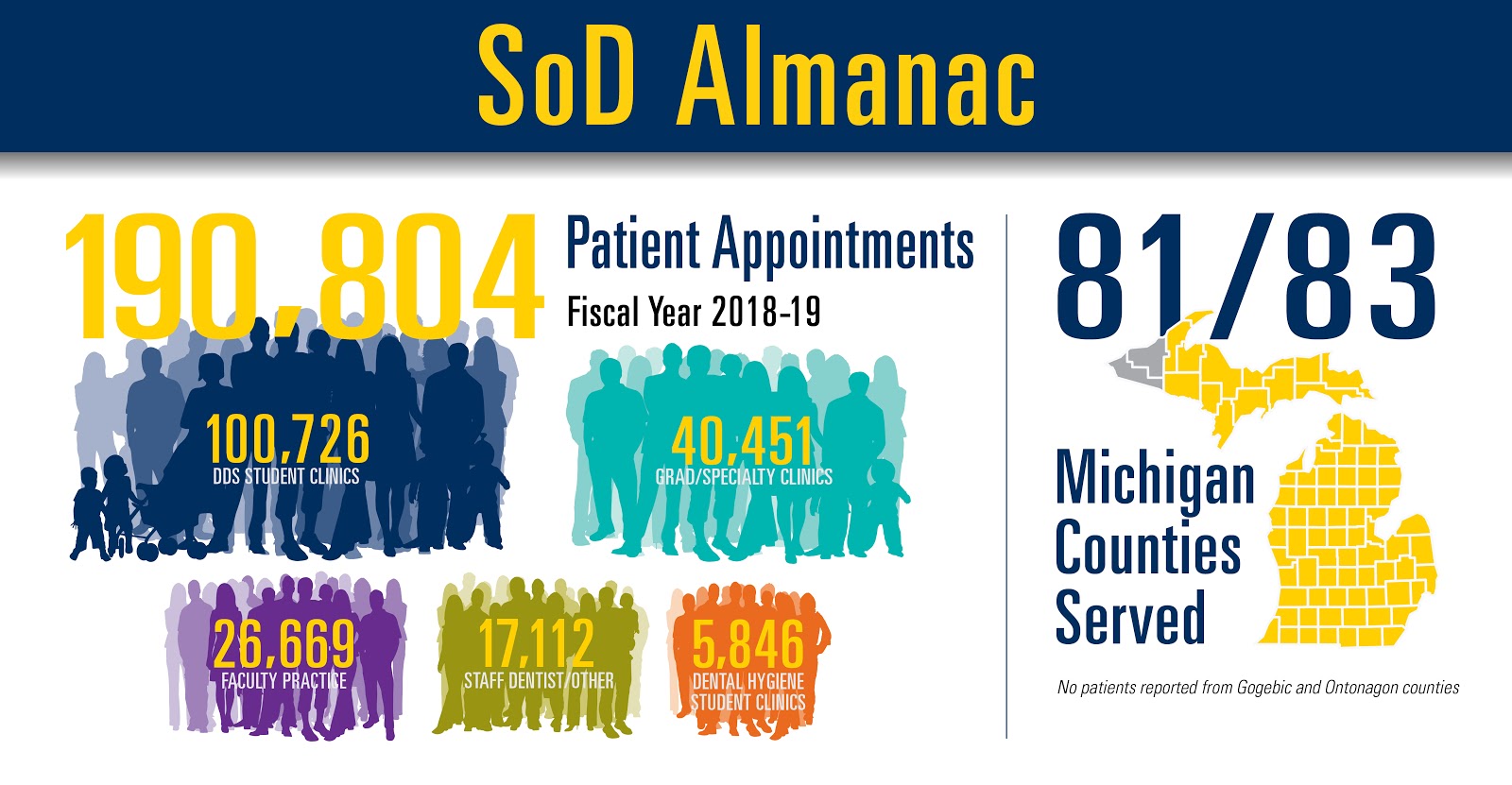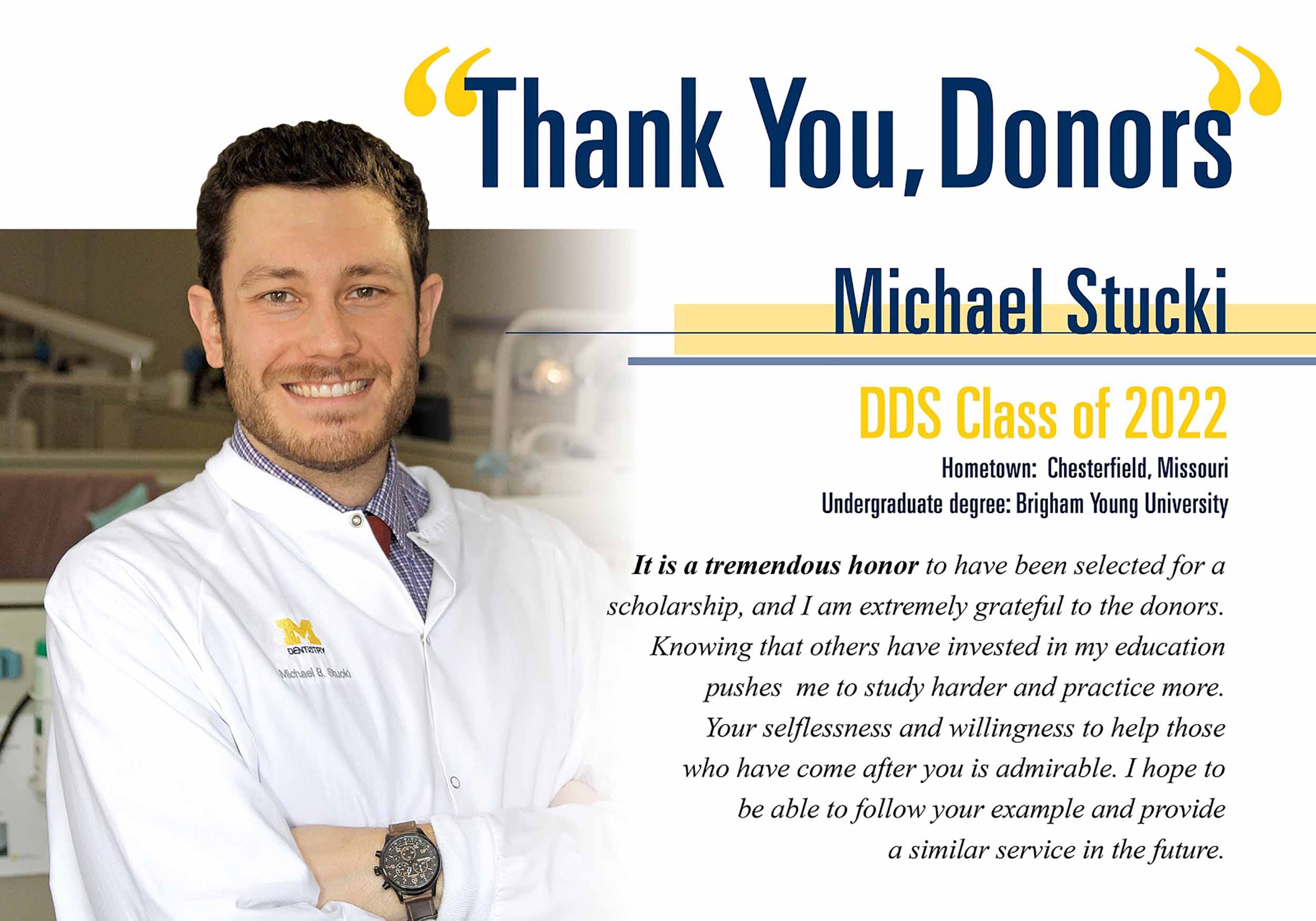Alumni Profile: Dr. Richard Gardner
If Dr. Richard Gardner doesn’t already hold the School of Dentistry record for longest continuous term by an adjunct clinical professor, he’ll certainly be near the top of the list by the time he decides to retire.
Gardner is an Ann Arbor endodontist who says he had the good fortune of good timing when he reached the end of his DDS degree in 1983 and as he was finishing his two-year master’s degree in endo in 1985. While he was a resident in the master’s program, he was offered a teaching position at the school. At about the same time, a group of endodontists had purchased a practice in Ann Arbor and wanted to add a resident. So Gardner worked in both places, spending his mornings at the dental school and his afternoons at the practice.
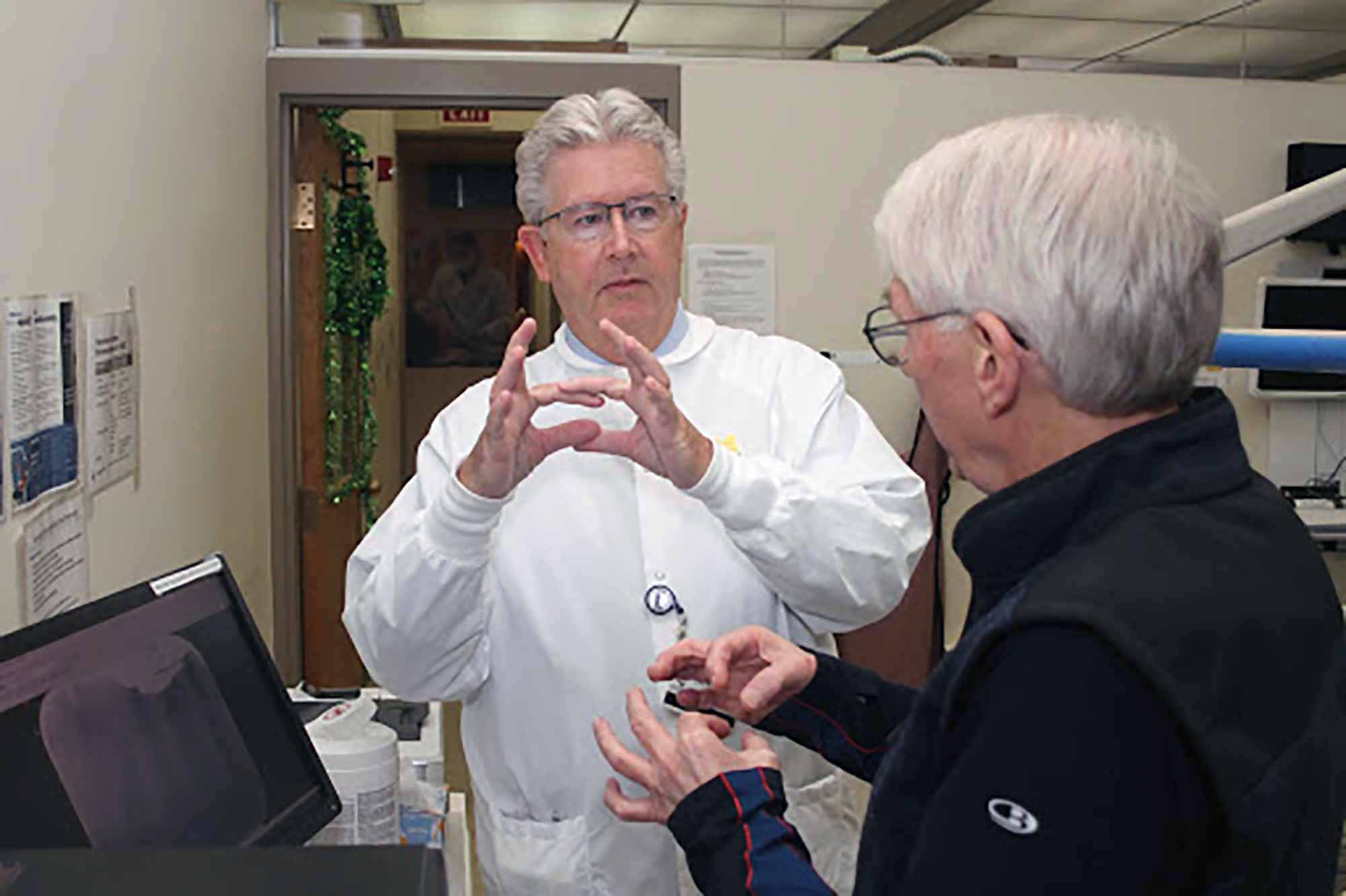
Dr. Rick Gardner (left) discusses how the shape of a patient’s tooth and its root will affect treatment with Dr. Neville McDonald, director of the Endodontics Graduate Program at the dental school.
Once he finished his education, Gardner stayed with the practice, Endodontic Associates, and stayed as an adjunct at the dental school. “I started as a dental student in 1979, so if you count that, I’ve been at the dental school every week since then, excluding vacations and time off,” he says. His adjunct status officially began in 1984, so he’s now at 36 continuous years and counting. For the last 25 years or so, his routine has been the same – Tuesday mornings and Thursday afternoons in the endodontics clinic at the dental school and the rest of his week at his practice on Eisenhower Parkway in south Ann Arbor.
Gardner, known as Rick to his friends and family, said he doesn’t view his teaching role as a job, but rather time off from his main job. “Life is a balance. I couldn’t be at my practice six days a week. I need to get out of there and do something different. The number one reason I teach is for the students. They are incredibly passionate about their profession. Not every dental student wants to do root canals, but endodontic graduate students want to do root canals. Their passion is contagious. It reinvigorates me every time I’m in there because they are so excited about what they do. Sometimes we have to kick them out at the end of the day and tell them to go home because the clinic is closing.”
For as much as he loves dentistry today, and has for the last 40 years, Gardner initially went in a different career direction. After receiving his undergraduate degree from Hillsdale College, he was disappointed by not getting into medical school. Looking back now, he’s philosophical: “It’s OK to see that sometimes we have rejections in our lives.” His second choice was to enroll at the U-M School of Public Health and earn a master’s degree in toxicology in environmental and industrial health. His first job was at the DuPont Chemical Company in Delaware in inhalation toxicology, analyzing safety exposure levels for workers in plants.
After a couple of years at DuPont, he began to consider other options and had to look no further than his sister and her husband for the answer. She was a dental hygienist and he was a dentist, so Gardner already had some basic knowledge about dentistry. After researching it further, he committed to dentistry as a new career and was admitted to the U-M School of Dentistry. “So my path into dentistry was certainly not a straight line,” he said. “I don’t ever regret having had that experience in the corporate world. That was all a positive influence on my life. Dentistry was just a change in course in my life at that time.”
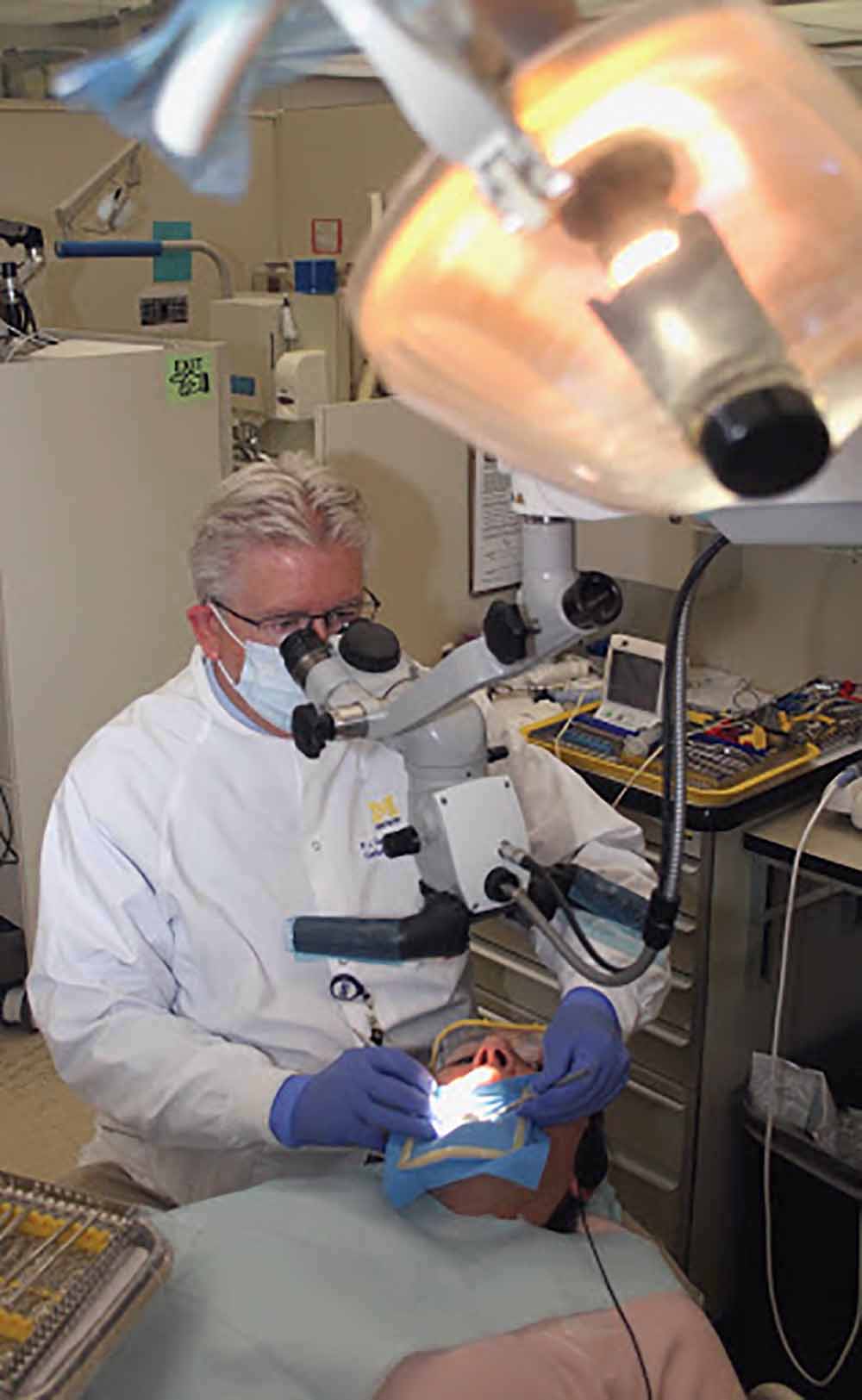
Dr. Rick Gardner uses a microscope to examine a patient who was being treated by a resident in the Endodontics Clinic at the dental school.
Gardner had been through a master’s program and spent a couple of years in the working world, but his description of dental school is very much the universal description of graduates no matter their path to entry – it was difficult, stressful and rewarding. He mentions endodontics professors John Corcoran (chair of the then-Endodontics Department), Robert Ellison and Sandy Laturno as positive influences on his decision to go into endodontics.
“When I entered dental school, I didn’t really have a goal to specialize. In fact, I probably didn’t know what a root canal was. After I did a total of maybe five, I decided I wanted to become an expert at it and I went right from dental school into the specialty program,” Gardner said. “What attracted me to endodontics was the urgent nature of the treatment we provide and just the appreciation of patients who have pain relieved. Today when I treat patients, they come in for a root canal expecting the worst. And they leave saying, well, that was not at all as bad as I had expected. That’s a pretty common comment from patients. I appreciate the fact that I am able to provide relief for patients.”
How he provides that relief has changed over the course of nearly four decades. The basic root canal procedure and biological objectives for saving a tooth are much the same, but the materials and equipment used in the process have advanced thanks to technology and clinical research. He recalls that when surgical operating microscopes first came on the scene during the 1990s, his practice bought just one and it quickly became a popular tool. It was in such demand that the dentists had to schedule patients around the availability of the microscope. Microscopes became the new standard and today Gardner and his colleagues use them for every patient and every tooth. The precision of digital imaging is another sea change improvement for those practicing endo today. Cone Beam Computed Tomography, or CBCT, provides a much more precise 3-dimensional image of a patient’s mouth than the old 2-dimensional radiographs. Plus, no one has to go into a darkroom and waste time using chemical solutions to develop the radiograph film. Another improvement is the apex locator, an electronic tool used to find where a root canal ends.
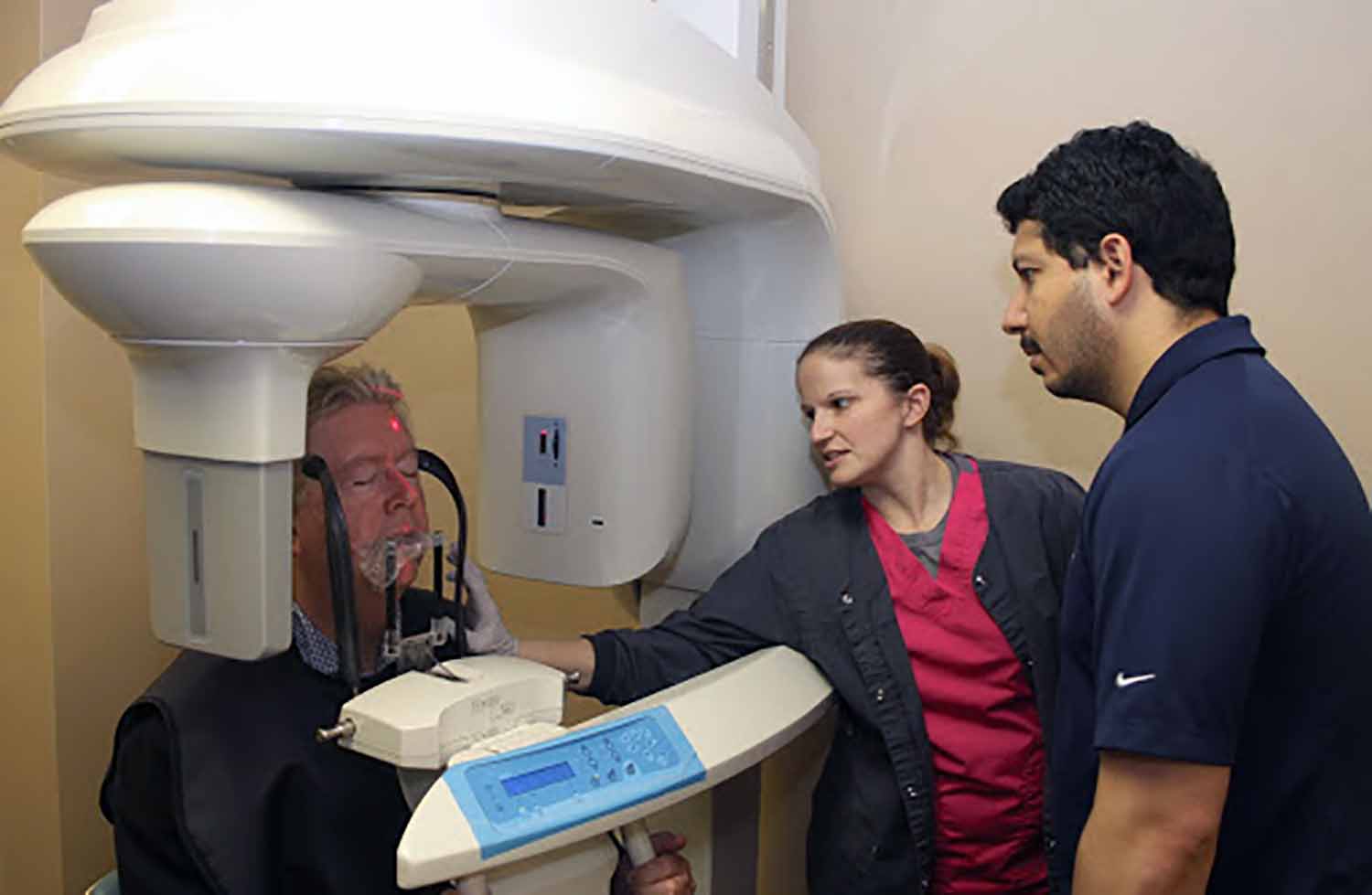
Dr. Rick Gardner (left) plays the role of patient at his Endodontic Associates practice as dental assistant Jaclyn McNett shows Sahil Manhas operating procedures for a CBCT scanner. Gardner invited Manhas, a resident in the dental school’s Graduate Endodontics Program, for the training session so that Manhas would be able to use the scanner for a research project.
Learning about new equipment and improved techniques comes through continuing education courses, but Gardner credits teaching at the dental school as an important way he stays current on the latest trends in dentistry. Not only do fellow faculty and administrators provide that connection to practice improvements and dentistry updates, but so do students. “It’s a give-and-take relationship,” he says. “I challenge them and they challenge me. When they ask – ‘Why do we do it this way, Dr. Gardner?” – I can’t answer, ‘Because that’s the way we’ve always done it.’ They won’t take that answer. They want evidence. If you are wrong, they’ll Google it and show you that you’re wrong. The information they have at their fingertips is hard to dispute. These are accomplished professionals, but I try to make it a family-like experience where we respect each other and appreciate what each other has to say.”
That collegiality among colleagues is also at the center of Gardner’s involvement in professional organizations. He is past president of the Michigan Association of Endodontists and past president of the Washtenaw District Dental Society. He is a previous board member of the Council of Michigan Dental Specialists and has helped create board exams as a member of the Endodontic Specialty Examination Committee for the State of Michigan. “It’s easy to belong to the field of dentistry and have other people do all the work running these organizations. It’s a lot of work. I encourage my residents to get involved in their local and state societies, because as a profession we all have to put in a little to get something back.”
Gardner is still going full-speed as a partner in Endodontic Associates and with his faculty duties, but he’s at a point where he takes time to reflect on his career from time to time. “I took a chance on dentistry and endodontics, and how fortunate I am today that all those things worked out for me,” he says. “When I look back on it, life has been kind to me.” Gardner and his wife JoAnn raised two sons and a daughter in Ann Arbor, and have taken advantage of all that a university town has to offer, including season tickets for many years to U-M football, men’s basketball and hockey games. Their nature trips are often to the log cabin they built in the Les Cheneaux Islands on Lake Huron along the southeastern tip of Michigan’s Upper Peninsula. Gardner and his two sons are experienced scuba divers who have planned vacations around that hobby.

Dr. Rick Gardner examines the digital image of a patient’s mouth created by a CBCT scan. Advances in digital imaging are one of many significant improvements in endodontic treatment during Gardner’s nearly 40-year career.
Gardner has been a longtime contributor to various development funds at the School of Dentistry. Last year, he made a $5,000 annual commitment over five years for the Graduate Endodontics Clinic Fund as part of the school’s major Blue Renew renovation and addition project now underway. “I am very appreciative of all that my profession and the School of Dentistry has given to me, so that’s one reason I give back,” he said. “But I was influenced by and excited about the renovation. I’ve been around there for a long time and we’ve been talking about this renovation for probably 10 years or more. And finally it is becoming a reality. I wanted to deliver on that. I want our residents to have the best opportunity. With all this technology that we’ve talked about, there are a lot of costs. A new clinic can attract the brightest and best. We’re going to be happy and proud with the final result, and I want to provide some of the resources that will give us the best technology to help our students succeed.”
Faculty, students, staff, administrators and the facilities all contribute to the tradition of excellence the school has established over the last century, Gardner said. It’s reflected in the school’s rankings by various organizations that have rated it as No. 1 in the country and No. 1 in the world in recent years. Maintaining that high quality is important in attracting even more outstanding faculty and students, and he notes that even patients are aware of the school’s standing.
“Sometimes when we’re seeing a patient at the school, we’ll ask, why are you here? And they’ll say, ‘Because I heard this is the number one dental school in the world and I want that treatment.’ So it is not only the dental community that hears about our quality, it’s the general population as well and it attracts patients. We have a reputation to uphold, and I’m happy to make my small contribution to that.”

